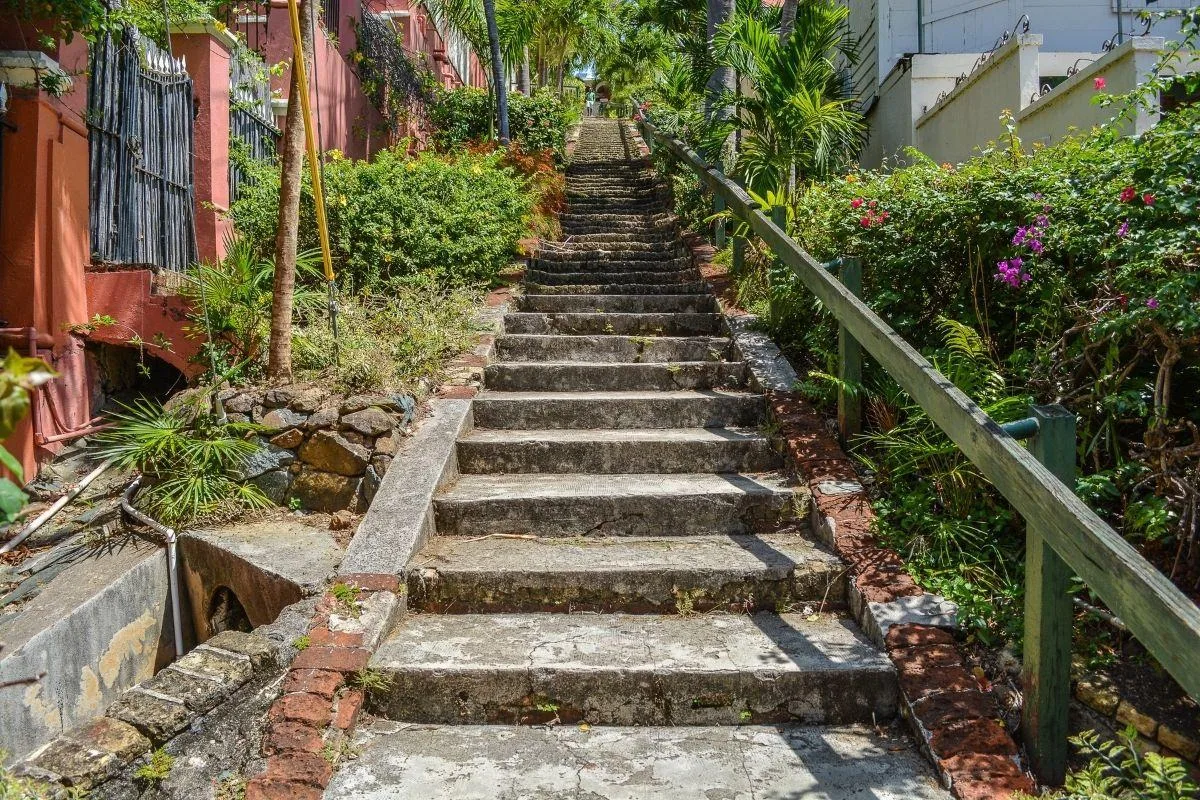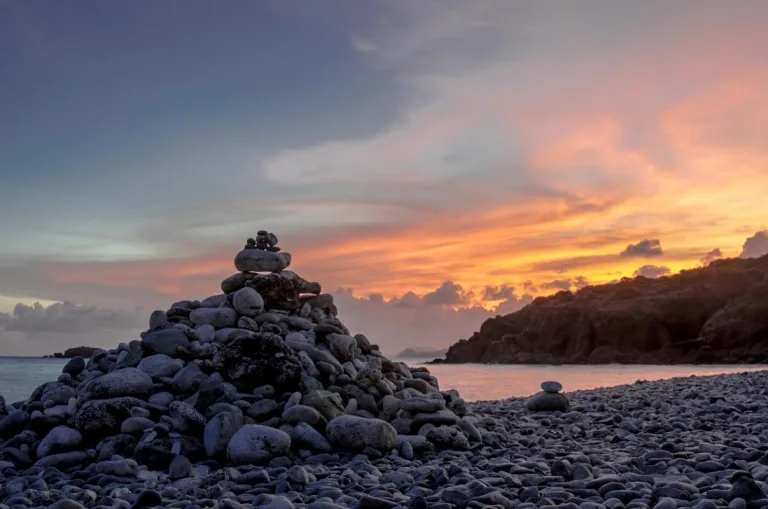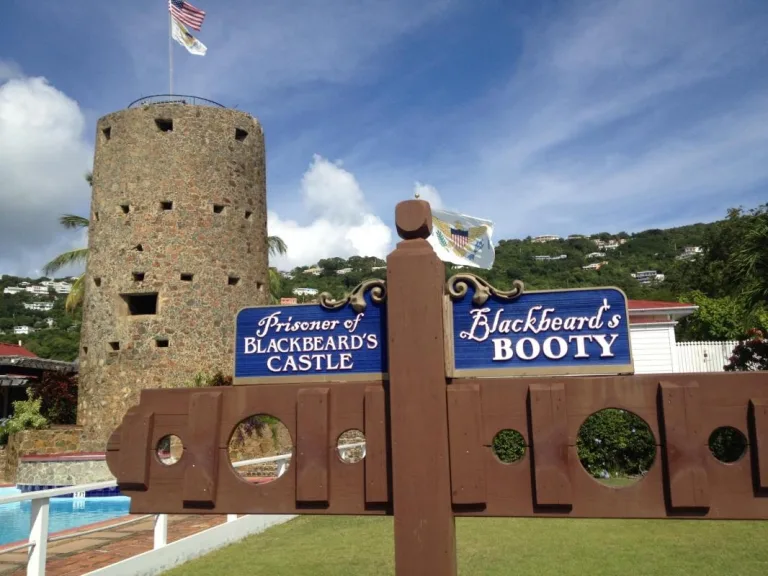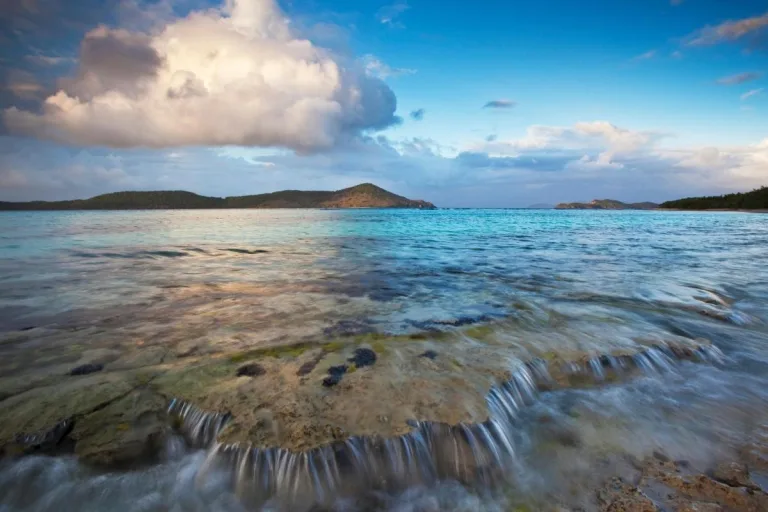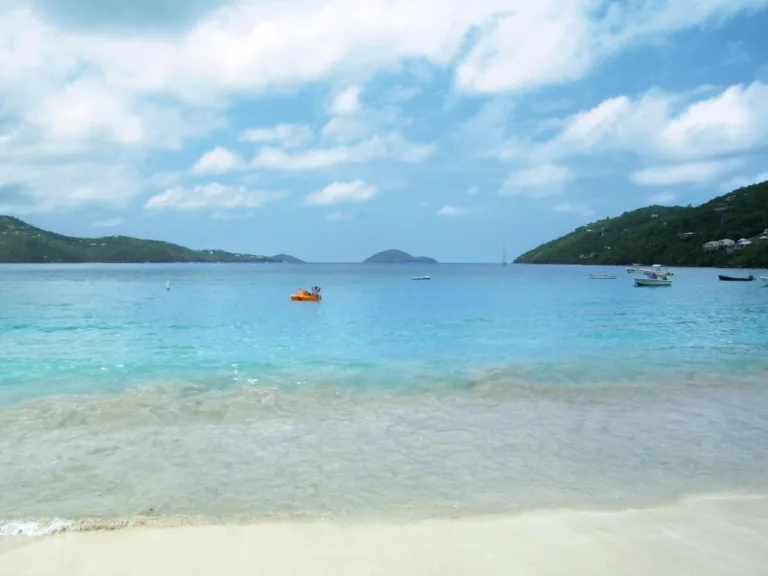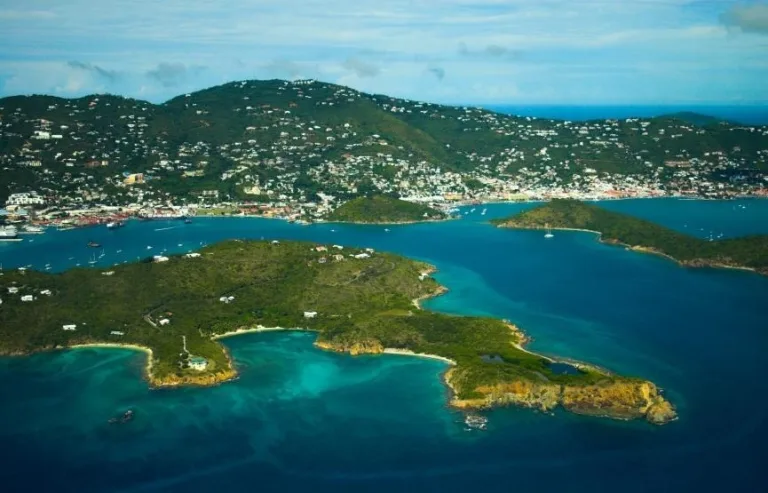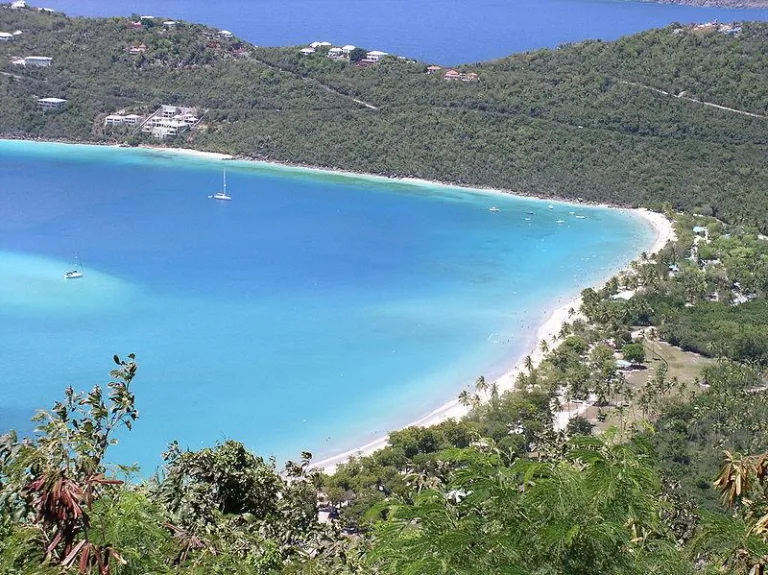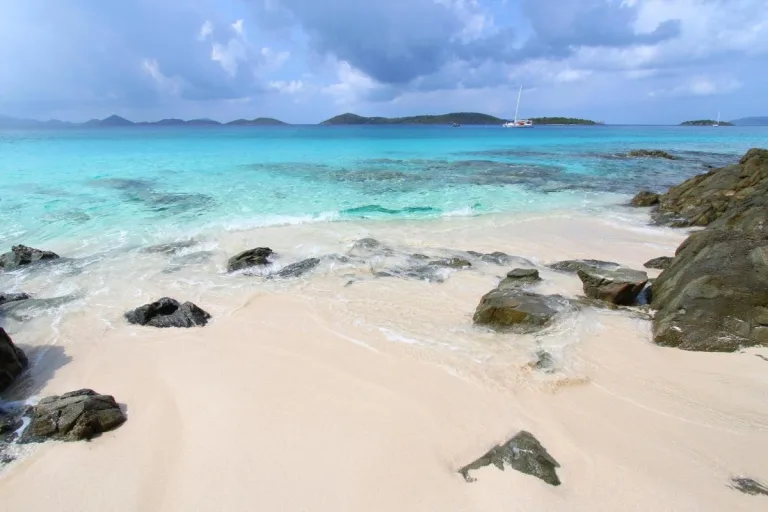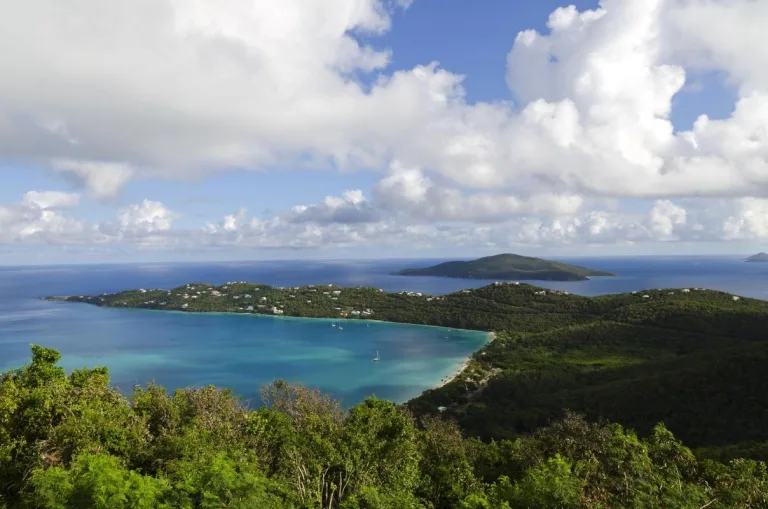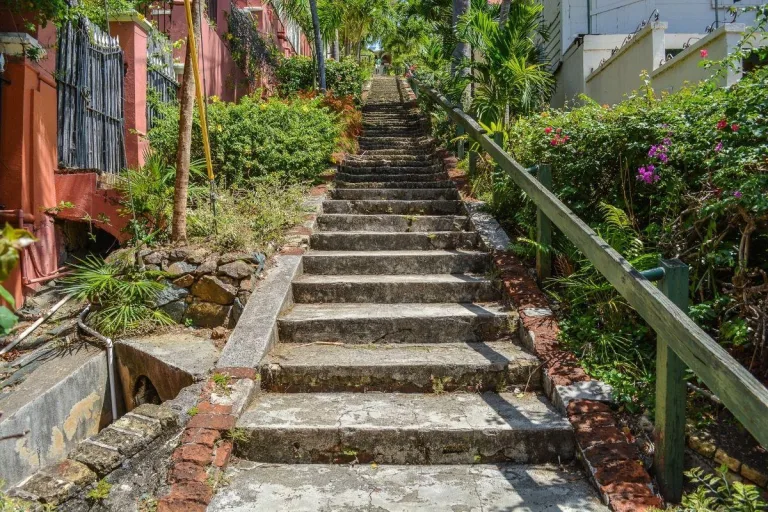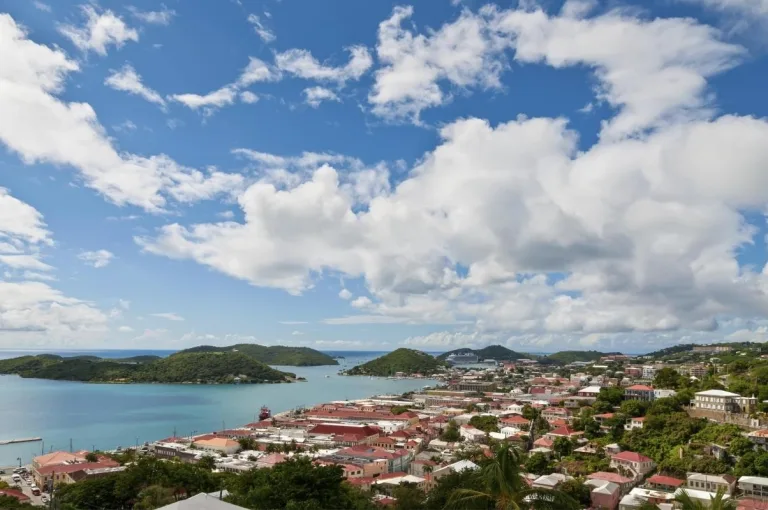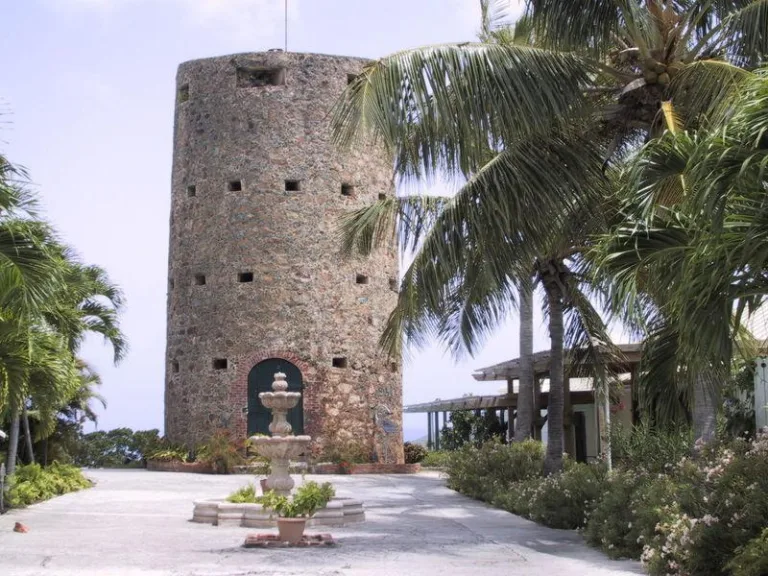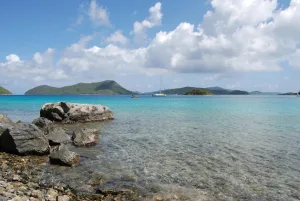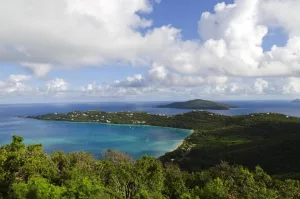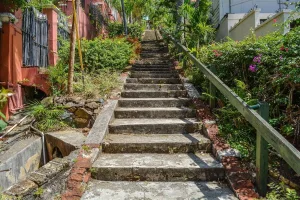During early colonization of the Caribbean, tall ships used huge stones as ballast in their hulls, then offloaded them while stocking up on spices and other goods, leaving the stones as a reminder of their visit. Residents of Charlotte Amalie in St. Thomas then used these stones to build steep stairways such as 99 Steps up the town’s hills.
While there are dozens of stairways or “step-streets” as they were known on St. Thomas, 99 Steps (there are actually 103) is the most popular one, thanks to the lush foliage that adorns either side, as well as the spectacular view from high atop the mountain once you make the climb. At the top, you’ll be able to spot Blackbeard’s Castle. You can also reach the top via a taxi, and avoid walking up the 103 steps. It’s easy, however, to take 99 Steps downward at a leisurely pace. Some guided tours of the island include a stop at the steps but typically don’t allow time for the climb.
- Travelers say the climb isn’t difficult but you can take breaks along the way if you need to and admire the view.
- Blackbeard’s Castle suffered roof damage during a hurricane, so may be closed.
- Be on the lookout for the flamboyant tree, which blooms with vibrant orange flowers during the late spring and summer months in the US Virgin Islands.
99 Steps is located in the town of Charlotte Amalie in St. Thomas, near the ferry pier and Fort Christian. Taxis are readily available in Charlotte Amalie, and it’s about a 10-minute drive from the cruise ship dock to the steps. If you’re staying on the island for a longer period of time, it’s recommended to rent a car to get around.
Expect to encounter the biggest crowds in St. Thomas and across the US Virgin Islands during the winter months, from December to March, especially when cruise ships are docked. Keep in mind, hurricane season happens from June to November, so consider buying travel insurance if you plan to visit during that time.
Located less than five minutes away by foot from 99 Steps, Fort Christian is a historic fortress that now serves as a museum with exhibits of artifacts, documents, period furniture, and Dutch antiques that recount the Caribbean island’s long history. It’s also an example of Dutch-Caribbean architecture in the Gothic-Revival style.

